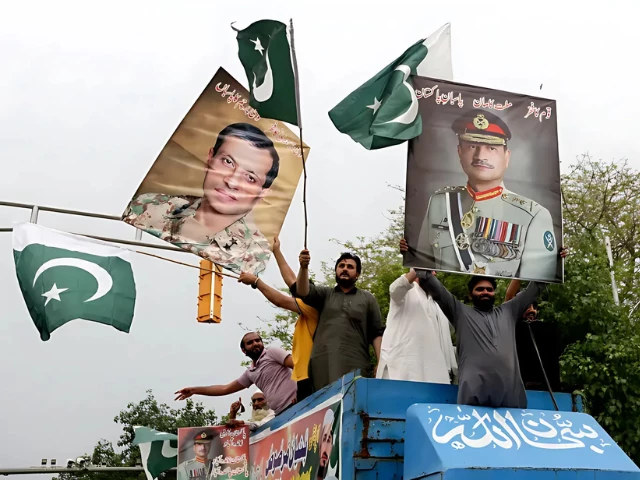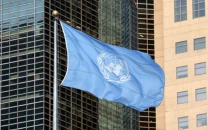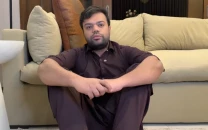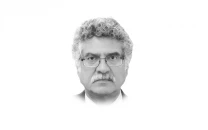Indian media exposed for spreading misinformation amid Pakistan-India tensions
Indian news outlets spread false stories using images from Gaza, claiming a fake invasion of Pakistani cities

As tensions between Pakistan and India escalated in May 2025, misinformation spread rapidly through Indian newsrooms, exacerbating an already volatile situation.
The misinformation wasn’t limited to social media or unverified posts; mainstream news networks were among the chief culprits, disseminating false reports that heightened public confusion.
Manisha Pande, media critic and managing editor at Newslaundry, described the situation as a "Frankenstein's monster" of unchecked misinformation.
Speaking to the Washington Post, Pande stated that these TV channels have gone out of control in their pursuit of ratings, largely influenced by the ruling Bharatiya Janata Party (BJP) and the increasing pressure to align with the government.
A particularly striking example occurred on May 9 when Prasar Bharati, India’s state-owned broadcaster, claimed on live television that Pakistan’s army chief had been arrested and a coup was underway.
‘1st India News’ even arrested Asim Munir and themselves appointed a new army chief for Pakistan! 😭 pic.twitter.com/AfRtiTaVDq
— Jawaharlal Nehru (Satire) (@The_Nehru) May 9, 2025
The news was rapidly spread across social media and major Indian news outlets, including Times Now and Zee News, only to later be debunked.
Gen. Asim Munir, a subject of many false reports, was not imprisoned, but instead promoted to the rank of field marshal.
This was not an isolated topic.
The Indian media has earned the nickname "Godi Media" for its consistent tendency to align with and amplify government narratives.
Throughout the conflict, Indian channels were frequently criticised for broadcasting unverifiable reports, some of which were based on social media posts or sources with little credibility.
In one such case, a major Hindi-language network falsely claimed that the Indian navy had attacked Pakistan's Karachi port.
The story spread quickly, despite there being no evidence to support the claim, and was published on the front pages of some Hindi newspapers.
INDIAN NAVY - “Why should AIR FORCE & ARMY have all the fun”
— KAFIR ON STEROIDS (@TammaraoPatil) May 8, 2025
INS VIKRANT strikes KARACHI PORT .
PAK NAVY burnt down to ashes ..
🇮🇳 HAR HAR MAHADEV 🙏🏻🚩 pic.twitter.com/LqcxrFiCdA
In the absence of verified information, national TV channels ran rampant with sensationalist, hypernationalistic narratives.
Reports surfaced that Indian forces had entered Pakistan, Pakistan’s Prime Minister had surrendered, and major Pakistani cities had been destroyed.
However, these claims were often accompanied by unrelated images of conflict elsewhere, such as Gaza or Sudan, or even scenes from video games, misleading viewers further.
Images from Gaza shared as strike on Sialkot in Pakistan. Images are 4 years old. https://t.co/sI6JyZhGJW pic.twitter.com/SD8a2quToR
— Pratik Sinha (@free_thinker) May 7, 2025
The role of social media in amplifying misinformation was also key.
Uzair Rizvi, a Delhi-based fact-checker, noted that misinformation spread rapidly on platforms like X (formerly Twitter) in the initial hours of the conflict, with over 70 unique posts of false information examined by 7 May.
Users often turned to AI chatbots like OpenAI’s ChatGPT or Grok for verification. Unfortunately, these chatbots are themselves known to be unreliable, offering answers that further muddied the facts.
In response to growing concerns over misinformation, Indian officials, including Prime Minister Narendra Modi, refrained from making public statements during the crisis, leaving the media to fill the void.
In addition to the media’s role in spreading misinformation, the Indian government also took steps to restrict the flow of information.
Authorities blocked access to Pakistani news outlets on YouTube and ordered the suspension of X accounts linked to individuals reporting on the conflict.
Journalists, including freelance reporter Hilal Mir, faced arrests for their online activities, further limiting independent reporting.



















COMMENTS
Comments are moderated and generally will be posted if they are on-topic and not abusive.
For more information, please see our Comments FAQ